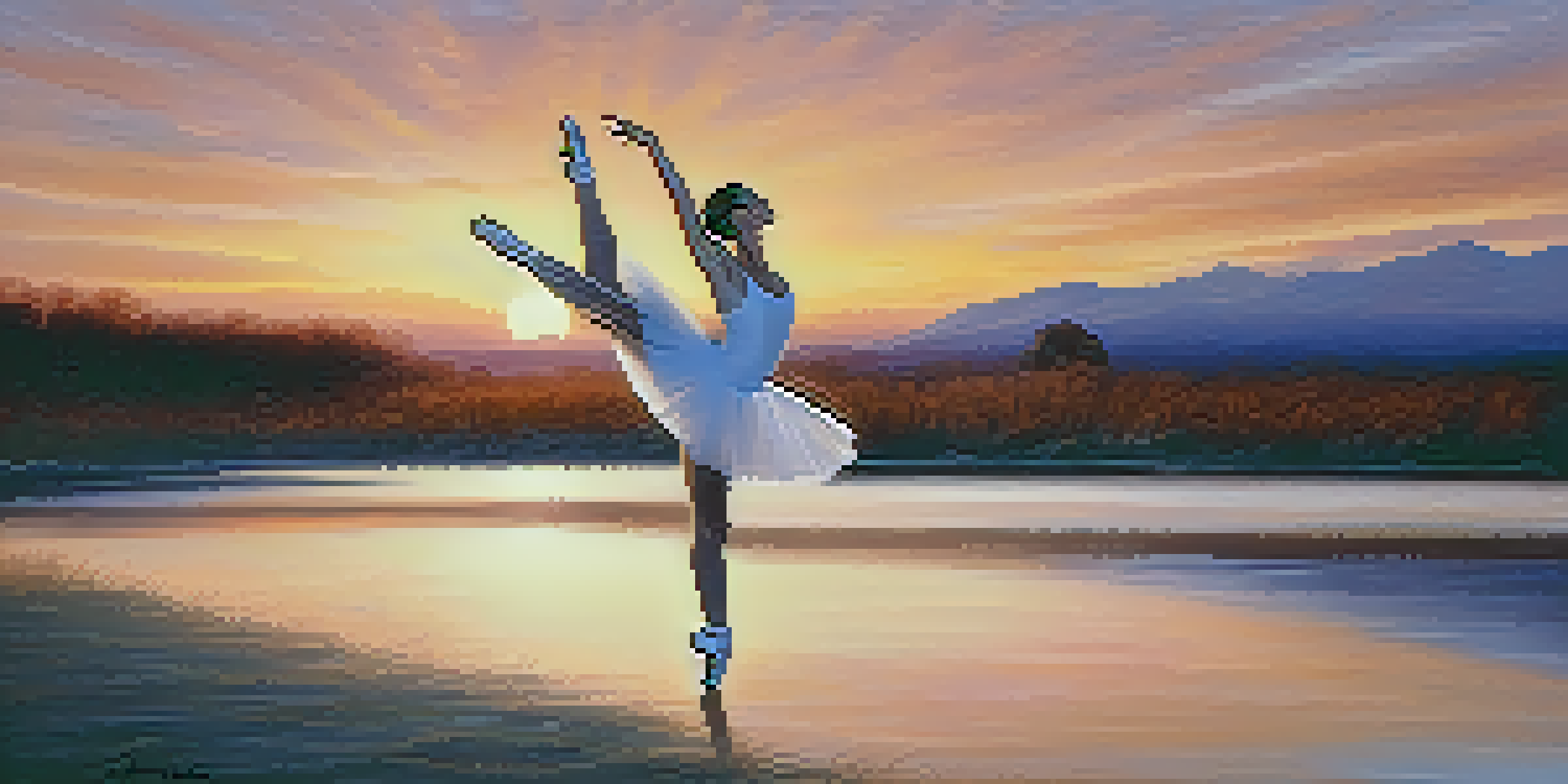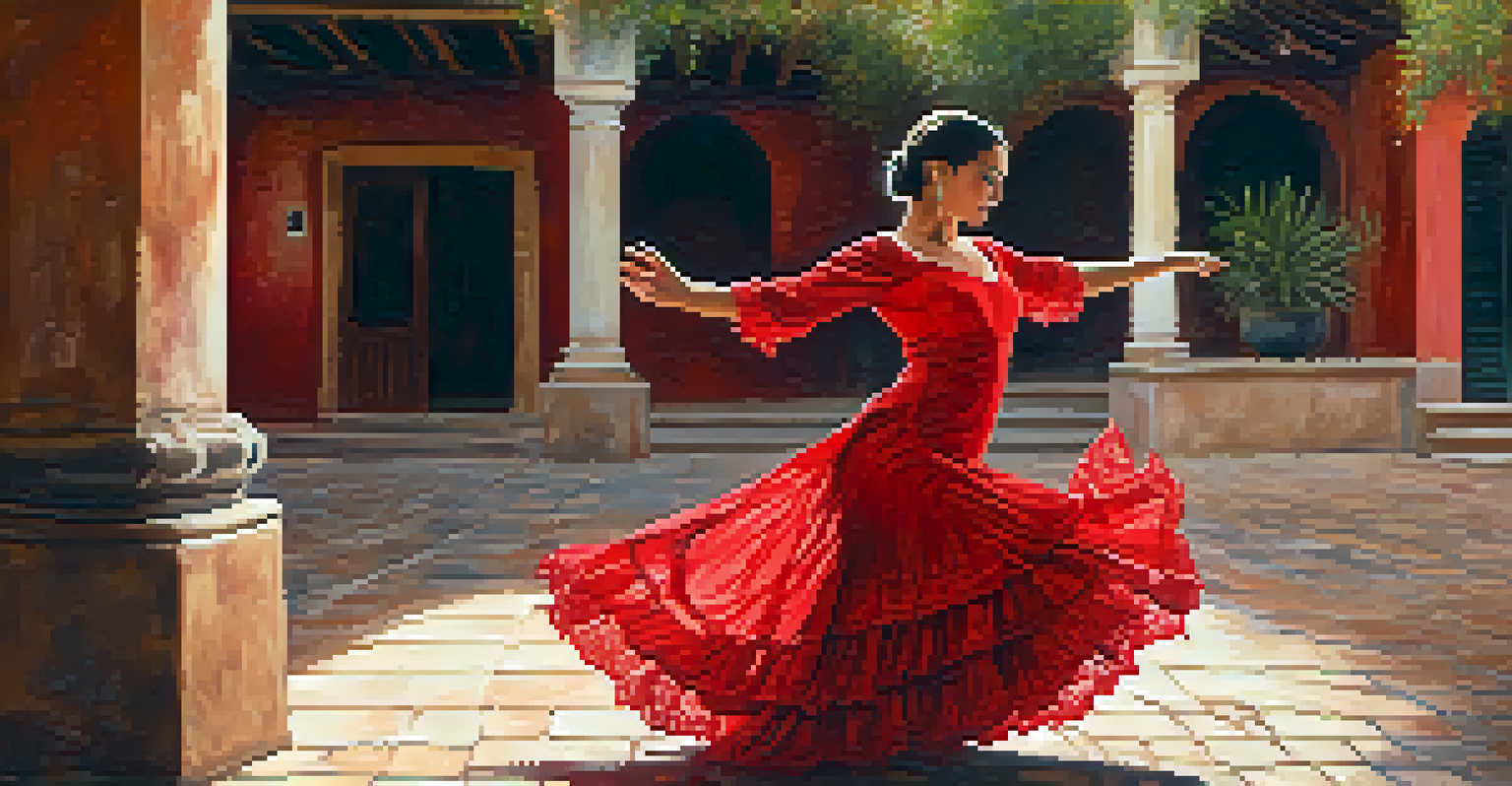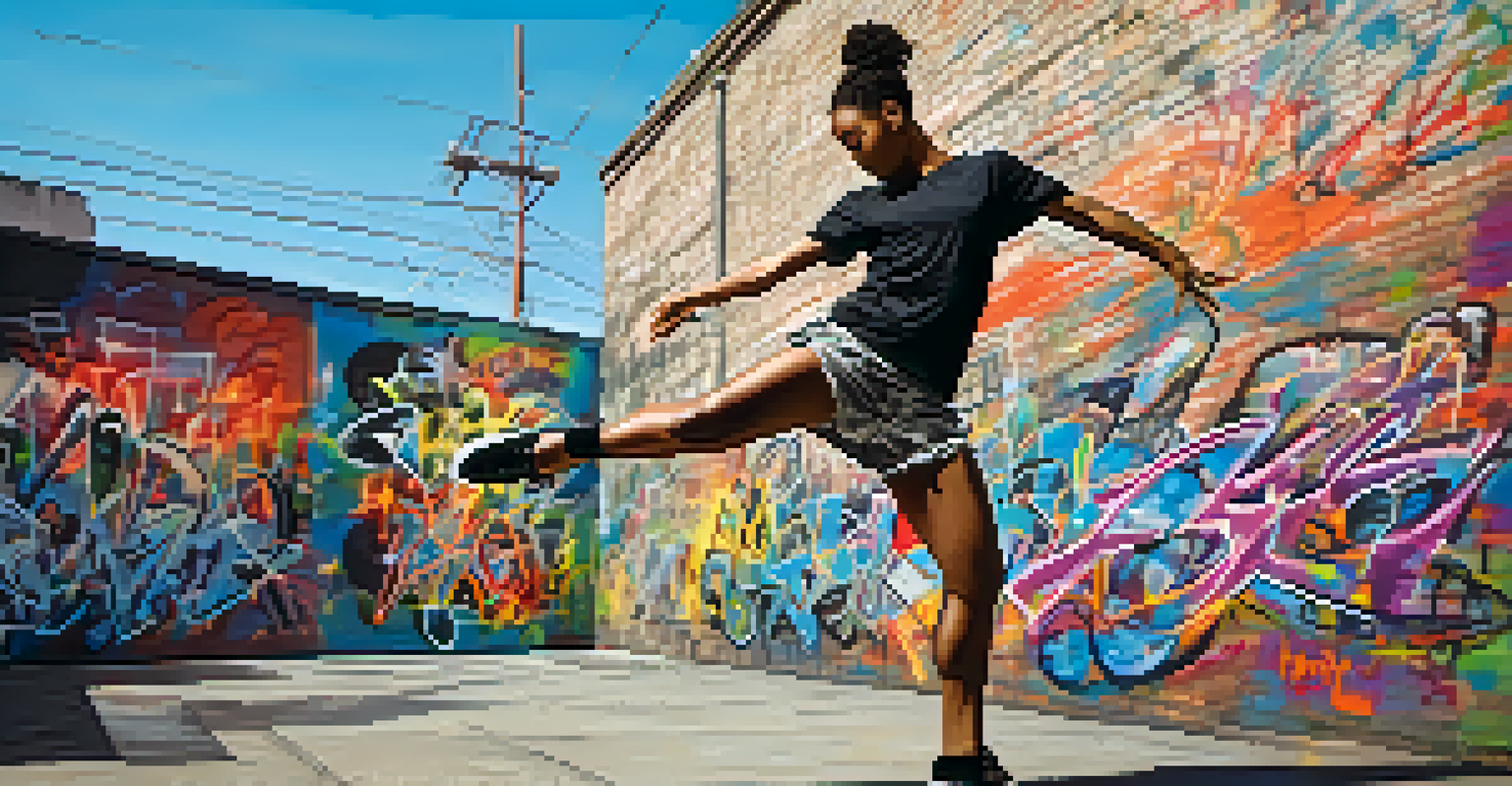The Choreography of Emotion: How Dance Conveys Feelings

Understanding Dance as Emotional Expression
Dance is often described as a universal language, one that transcends words. It allows individuals to express feelings that might be difficult to articulate verbally. Through movement, dancers convey a wide range of emotions, from joy and love to sadness and despair. This connection between dance and emotion creates a powerful experience for both the performer and the audience.
Dance is the hidden language of the soul.
When we watch a dancer move across the floor, we can often feel their emotions resonating within us. Each gesture, each leap, and each sway tells a story that words simply cannot capture. This is why dance can evoke such strong feelings; it taps into our shared human experience and allows us to connect with one another on a deeper level.
Moreover, the intricacies of choreography can highlight the nuances of emotions. For instance, a slow, fluid movement might convey a sense of melancholy, while sharp, quick motions could express excitement or anger. This ability to translate feelings into physical form is what makes dance such a compelling art form.
The Role of Music in Emotional Dance
Music plays a crucial role in shaping the emotional landscape of dance. The rhythm, melody, and dynamics of a piece can significantly influence how dancers interpret and express their feelings. For example, a lively, upbeat song might inspire joyful movements, while a somber tune could lead to more reflective and sorrowful gestures.

When dancers synchronize their movements with the music, it creates a harmonious connection that enhances the emotional impact. This synergy between music and dance allows the audience to feel the emotions more profoundly. It's like watching a story unfold where each note guides the dancer's expression and the viewer's interpretation.
Dance as Universal Emotional Language
Dance transcends words by allowing individuals to express complex emotions through movement.
Furthermore, dancers often choose music that resonates with their own emotions, adding a personal touch to their performance. This choice can transform a simple routine into a passionate outpouring of feelings, making the experience even more relatable for the audience.
Cultural Contexts and Emotional Expression in Dance
Different cultures have unique ways of expressing emotions through dance. Traditional dances often reflect the values, beliefs, and histories of a community, conveying feelings that are specific to their cultural context. For instance, the expressive movements of Flamenco can convey deep passion and heartbreak, while the graceful flow of ballet often embodies elegance and beauty.
Music can change the world because it can change people.
This cultural lens not only enhances the emotional depth of the dance but also invites audiences to connect with diverse experiences. By engaging with these performances, viewers gain insight into different emotional landscapes shaped by cultural narratives. It's a beautiful reminder of how varied yet similar human emotions can be across the globe.
Moreover, cultural dance can serve as a powerful medium for storytelling, allowing dancers to express collective emotions tied to heritage and identity. This connection to cultural roots can amplify the emotional resonance of the performance, making it a shared experience that transcends individual feelings.
Physicality and Emotion: The Body's Role in Dance
The body is a powerful vessel for emotion in dance, with each movement reflecting internal feelings. Dancers learn to use their bodies intentionally, manipulating posture, breath, and energy to convey various emotions. For example, a slumped posture might express defeat or sadness, while an open stance could signify confidence and joy.
This physical expression of emotion often resonates with audiences on a visceral level. Viewers may find themselves mirroring the dancer's movements or emotions, creating a shared experience that fosters empathy. This connection highlights how effectively the body can communicate what words may fail to express.
Music Enhances Dance Emotions
The interplay between music and dance deepens emotional expression and audience connection.
Additionally, the training that dancers undergo equips them to channel their emotions through movement. This rigorous physical training allows them to explore and expand their emotional range, making their performances more impactful. The result is a compelling blend of artistry and emotion that captivates and moves audiences.
Improvisation: Spontaneous Emotion in Dance
Improvisation in dance offers a unique avenue for emotional expression, allowing dancers to draw from their immediate feelings in the moment. This spontaneity can lead to raw and authentic performances that resonate deeply with viewers. When a dancer improvises, they tap into their emotions without the constraints of choreography, often producing surprising and powerful movements.
This form of dance can act as a therapeutic outlet, helping dancers process their emotions and experiences. The freedom to move without a predetermined structure enables them to explore their feelings in a safe space. It's not uncommon for the resulting performance to evoke strong emotional responses from the audience, as the authenticity of the moment shines through.
Moreover, improvisation encourages a dialogue between the dancer and the audience. As emotions unfold in real-time, viewers become active participants in the experience. This dynamic exchange can heighten the emotional connection, making it more memorable for everyone involved.
The Emotional Journey of Dance Performances
Dance performances often take audiences on an emotional journey, skillfully guiding them through various feelings. Choreographers design narratives that evoke specific emotions, creating a rollercoaster of experiences for viewers. This structure helps to build tension, release, and ultimately a deeper understanding of the emotional themes at play.
As the performance unfolds, audiences may find themselves laughing, crying, or feeling a sense of nostalgia. This collective emotional experience creates a bond between the dancers and the audience, fostering a sense of community. It’s a reminder that dance can reflect the complexities of our shared human experience.
Dance as a Therapeutic Tool
Dance therapy helps individuals process emotions and fosters a sense of community and support.
Additionally, the climactic moments in a performance often leave a lasting impact. Whether it's a powerful leap or a tender embrace, these pivotal scenes can resonate long after the final bow. The emotional journey facilitated by dance allows audiences to reflect on their own feelings and experiences, creating a lasting connection to the art form.
The Therapeutic Power of Dance and Emotion
Dance is not only a form of artistic expression but also a powerful therapeutic tool. Many people use dance as a way to process their emotions and cope with life's challenges. Through movement, individuals can release pent-up feelings, reduce stress, and enhance their overall well-being.
Dance therapy, a growing field, combines psychology and movement to help individuals explore their emotions in a safe environment. Participants often find that expressing themselves through dance allows them to confront feelings that may be difficult to verbalize. This form of therapy can lead to profound emotional breakthroughs and healing.

Moreover, the communal aspect of dance can foster a sense of belonging and support. Whether in a class or a performance, sharing the experience of dance can create connections among participants, enriching their emotional lives. This therapeutic power of dance serves as a reminder of the importance of emotional expression and connection in our lives.